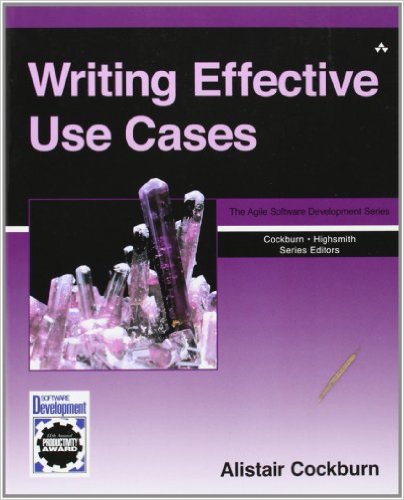Crafting a Comprehensive White Paper Based on "Writing Effective Use Cases"
This white paper aims to delve into the key concepts and practical applications of use cases, drawing heavily from Alistair Cockburn's seminal work, "Writing Effective Use Cases." By providing a comprehensive overview, detailed explanations, and actionable guidelines, this paper seeks to empower readers with the knowledge and tools to create effective use cases that drive successful software development projects.
1. Understanding Use Cases
- Definition and Purpose:
- A use case is a narrative description of how a user interacts with a system to achieve a specific goal.
- They serve as a bridge between business requirements and technical specifications, ensuring that the system meets the needs of its users.
- Key Components:
- Actor: The entity that interacts with the system (human or another system).
- Goal: The desired outcome of the interaction.
- Preconditions: Conditions that must be true before the use case can start.
- Postconditions: Conditions that must be true after the use case completes successfully.
- Basic Flow: The primary sequence of steps to achieve the goal.
- Alternative Flows: Alternative paths the use case can take, such as error handling or exceptional scenarios.
2. The Use Case Writing Process
- Step 1: Identify Actors and Goals:
- Determine who will interact with the system and what they want to achieve.
- Consider both primary and secondary actors, as well as system actors.
- Step 2: Define the Scope:
- Clearly delineate the boundaries of the system under consideration.
- Avoid including unnecessary details that might distract from the core functionality.
- Step 3: Create the Basic Flow:
- Write a clear and concise narrative of the primary path to achieve the goal.
- Use simple language and avoid technical jargon.
- Step 4: Identify Alternative Flows:
- Consider all possible variations and exceptions that might occur.
- Document these alternative paths in detail.
- Step 5: Specify Preconditions and Postconditions:
- Define the conditions that must be met before and after the use case execution.
- This ensures that the system functions correctly and consistently.
- Step 6: Review and Refine:
- Conduct thorough reviews to identify and address any ambiguities or inconsistencies.
- Involve stakeholders from various disciplines to ensure a comprehensive perspective.
3. Advanced Use Case Techniques
- Use Case Diagrams:
- Visual representation of actors and use cases, highlighting their relationships.
- Useful for understanding the overall system architecture and dependencies.
- Use Case Levels:
- User-Goal Level: High-level view of user goals.
- Subfunction Level: Detailed breakdown of specific tasks within a user goal.
- Use Case Templates:
- Standardized formats for capturing use case information.
- Can be customized to fit specific project needs.
4. Best Practices for Effective Use Case Writing
- Write Clear and Concisely:
- Use simple language and avoid technical jargon.
- Focus on the essential details and avoid unnecessary complexity.
- Involve Stakeholders:
- Collaborate with users, developers, and other stakeholders to ensure that the use cases accurately reflect their needs.
- Prioritize Use Cases:
- Identify and focus on the most critical use cases that will have the greatest impact on the system.
- Review and Iterate:
- Continuously review and refine use cases throughout the development process.
- Incorporate feedback from stakeholders to improve clarity and accuracy.
5. Conclusion
By following the guidelines outlined in this white paper, you can create effective use cases that serve as a valuable tool for communication, requirements gathering, and system design. Remember that use cases are a living document that should evolve as the project progresses. By investing time and effort in writing high-quality use cases, you can significantly improve the chances of delivering successful software projects that meet the needs of your users.
Reference List
- Cockburn, A. (2001). Writing Effective Use Cases. Addison-Wesley Professional.



